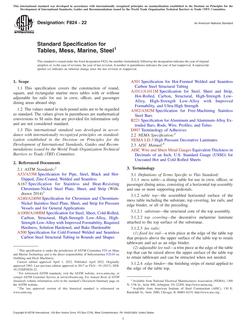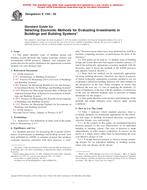1.1 This practice covers the minimum elements for the accurate location and description of geospatial data for defining an abandoned mine land (AML) keyword feature.
1.1.1 This practice addresses mining geospatial data relative to the Surface Mining Control and Reclamation Act of 1977 (SMCRA). This geospatial data shall be obtained from each state, tribal, or federal (or combinations thereof) coal mining regulatory authority (RA) authorized under SMCRA to reclaim the surface and underground effects of past mining operations. Abandoned mine land, as specified in SMCRA Sections 404 (coal), 409 and 411 (non-coal) and cross-referenced in additional sections on eligible lands, consist of those lands and waters which were mined for coal or other minerals (or both) or impacted by processing operations prior to the enactment of SMCRA and abandoned or left in an inadequate condition of reclamation and for which there is no continuing reclamation responsibility under state or other federal laws for mitigation of adverse impacts to human health and safety or environmental resources.
1.1.2 Title IV of SMCRA establishes the national AML Reclamation Program under the Office of Surface Mining Reclamation and Enforcement (OSMRE), U.S. Department of the Interior (DOI). The program was developed to reclaim land and water resources adversely affected by past coal and non-coal mining and left abandoned or inadequately restored. During the years immediately following the enactment of SMCRA, OSMRE, states, and Indian tribes conducted surveys of eligible lands and waters and created individual inventories of problems to be addressed under Title IV. In 1990, SMCRA was amended and OSMRE was required to maintain a national inventory of high priority abandoned mine sites and provide standardized procedures for states and tribes to use in updating the data. The need for an automated nationwide inventory system led to the creation of the AML Inventory System (AMLIS), a compilation of the individual state, tribe, Federal Reclamation Program (FRP), and Rural Abandoned Mine Program (RAMP) inventories. The AMLIS documents the counts for AML problem types and the costs to remedy those problems. The system captures estimated unfunded costs, estimated construction costs when funding is made available for reclamation projects, and the actual costs for completed construction projects. It is used in support of work plan development and to record the work completed under each RA's program and to report the extent and estimated cost to reclaim remaining AML problems.
1.1.3 As used in this practice, an AML keyword feature is a point, line, or polygon defining the location of a specific on-the-ground feature contained within an AML problem area (PA) as described in the AML Inventory Manual.
1.1.4 This standard is one of several that have been approved or are in development related to characteristics of AMLs. Also under development is a terminology standard. Initial development of these standards is being done on an individual basis, however, they may be consolidated to reduce repetition of information between them.
1.2 This practice applies to pre-SMCRA AML keyword features that are inventoried in the AMLIS under the SMCRA Title IV Reauthorization to provide for identification and location of AML sites.
1.3 The values stated in either SI units or inch-pound units are to be regarded separately as standard. The values stated in each system may not be exact equivalents; therefore, each system shall be used independently of the other. Combining values from the two systems may result in non-conformance with the standard.
1.4 This standard does not purport to address all of the safety concerns, if any, associated with its use. It is the responsibility of the user of this standard to establish appropriate safety and health practices and determine the applicability of regulatory limitations prior to use.
1.5 This practice offers a set of instructions for performing one or more specific operations. This document cannot replace education or experience and should be used in conjunction with professional judgment. Not all aspects of this practice may be applicable in all circumstances. This ASTM standard is not intended to represent or replace the standard of care by which the adequacy of a given professional service must be judged, nor should this document be applied without consideration of a project's many unique aspects. The word “Standard“ in the title of this document means only that the document has been approved through the ASTM consensus process.
Product Details
- Published:
- 01/01/2010
- Number of Pages:
- 6
- File Size:
- 1 file , 87 KB


